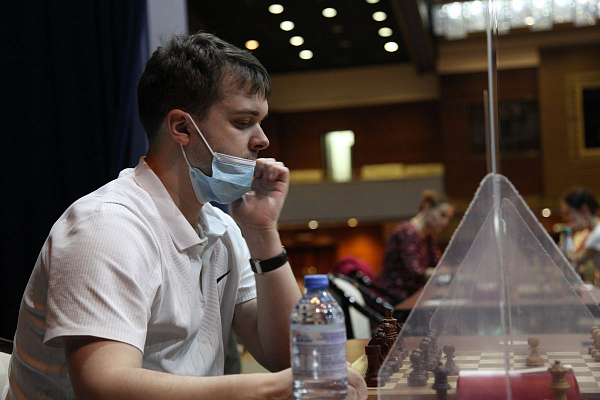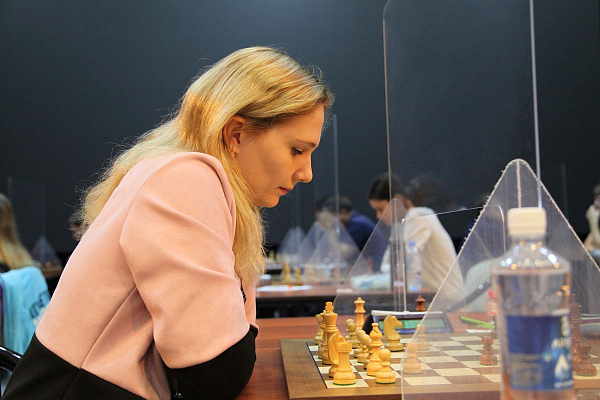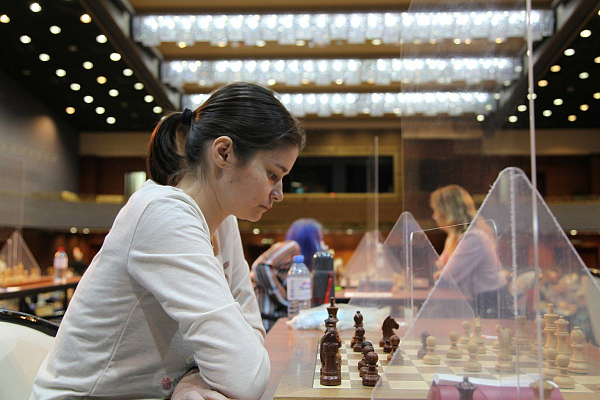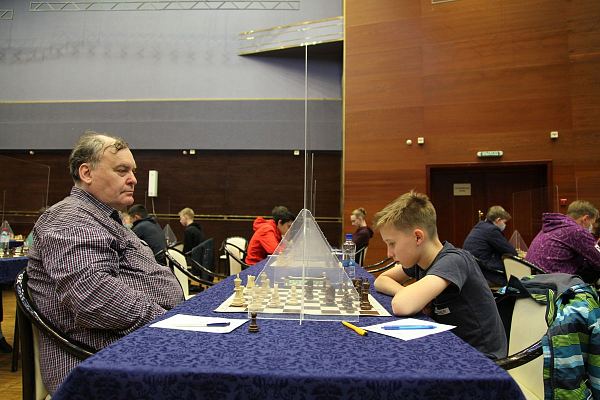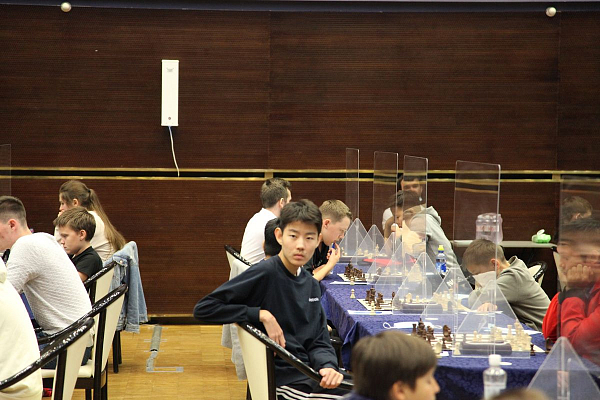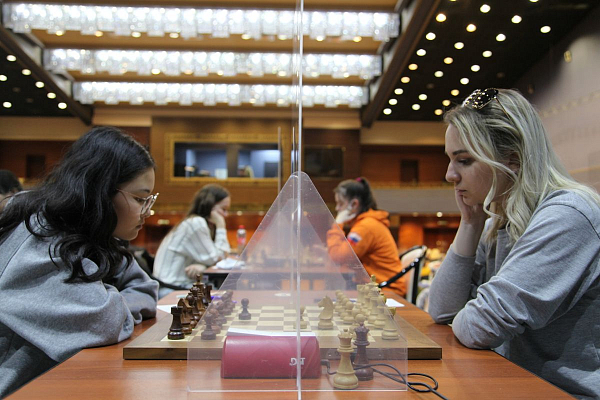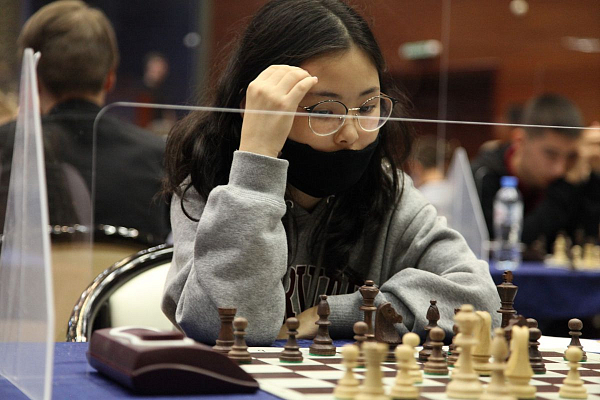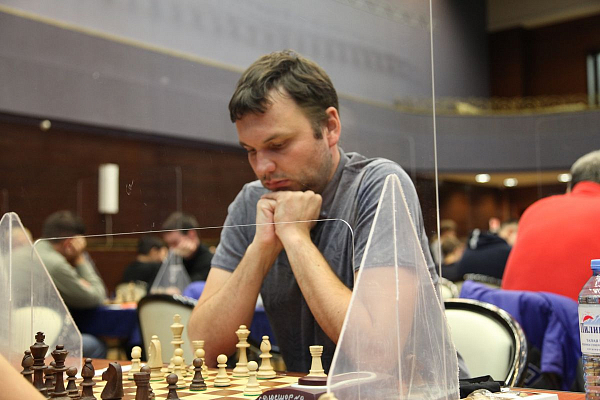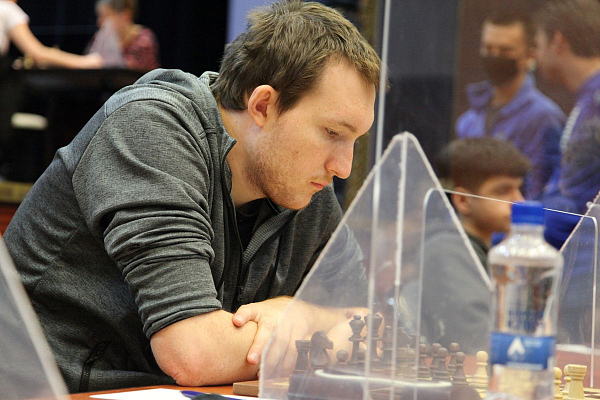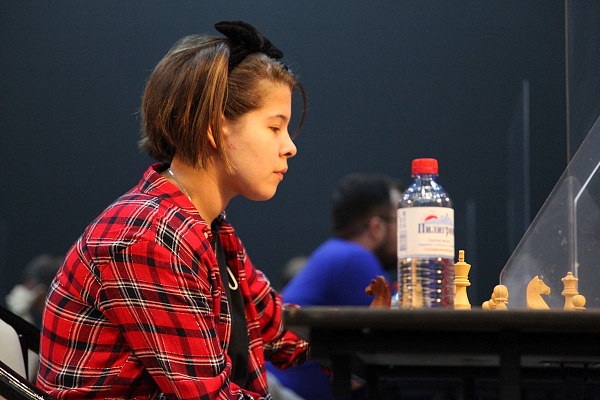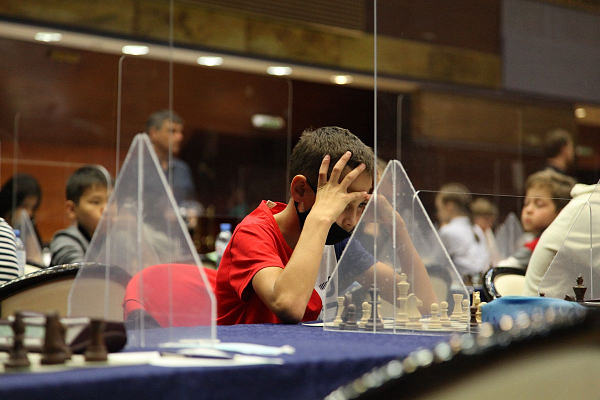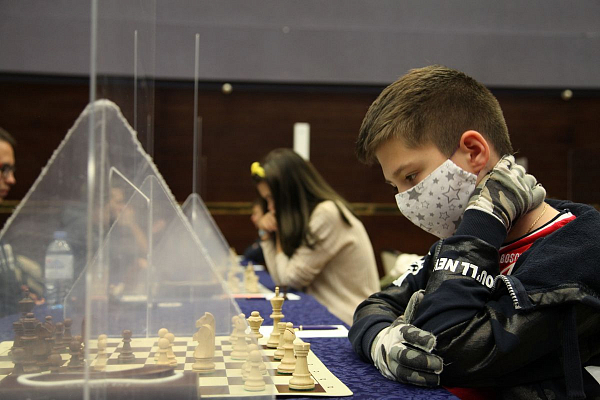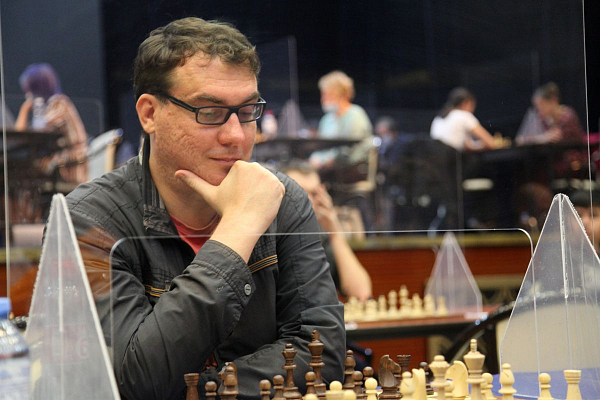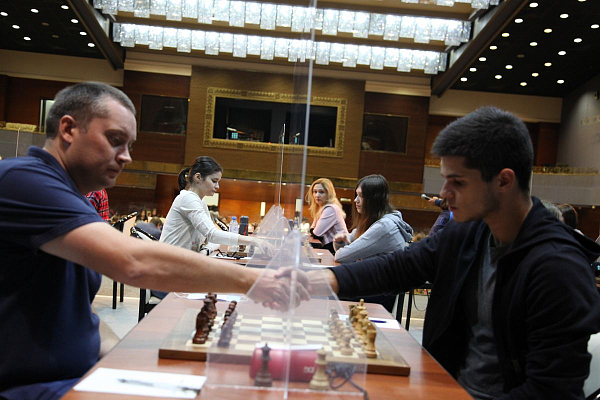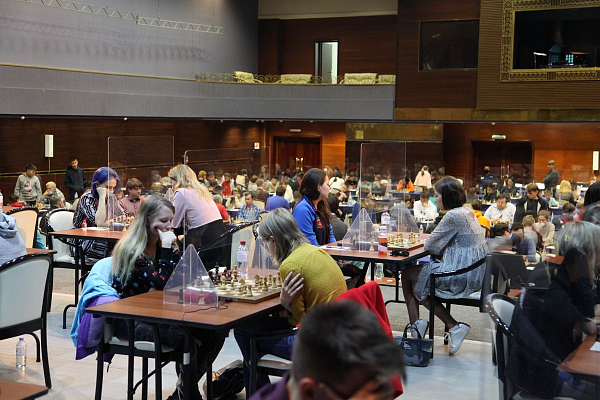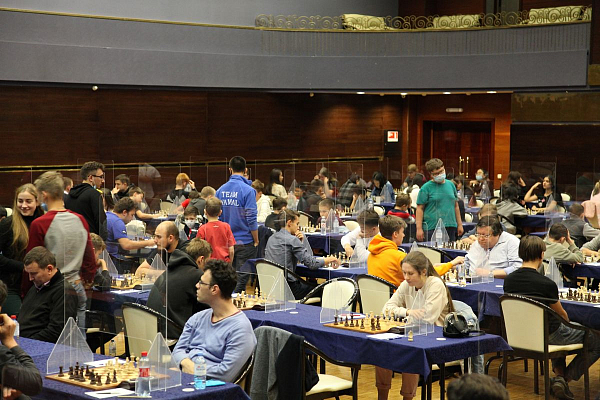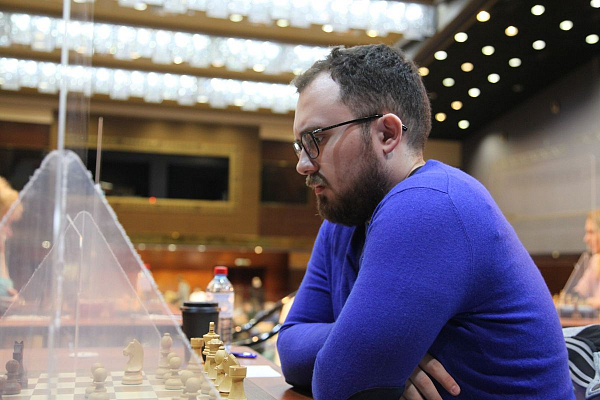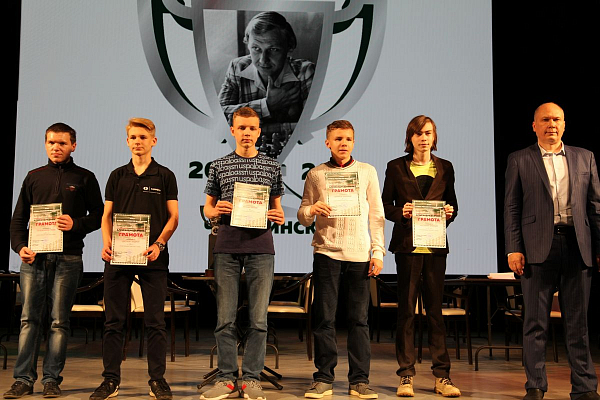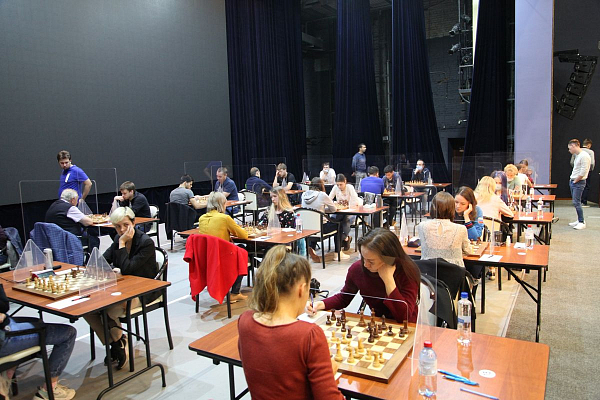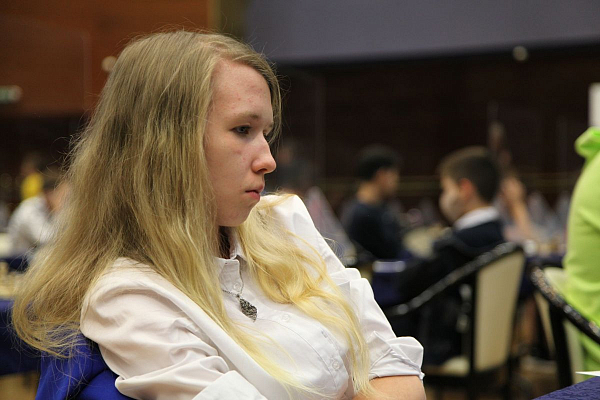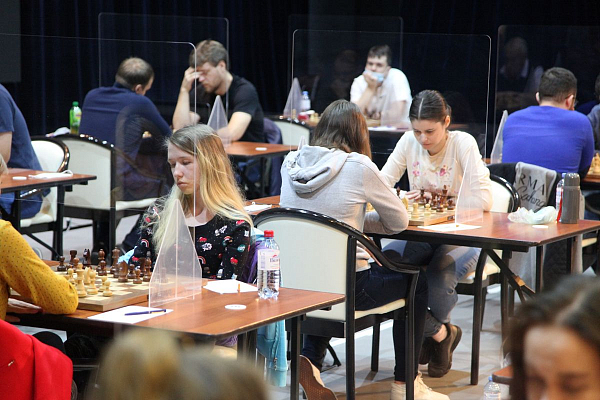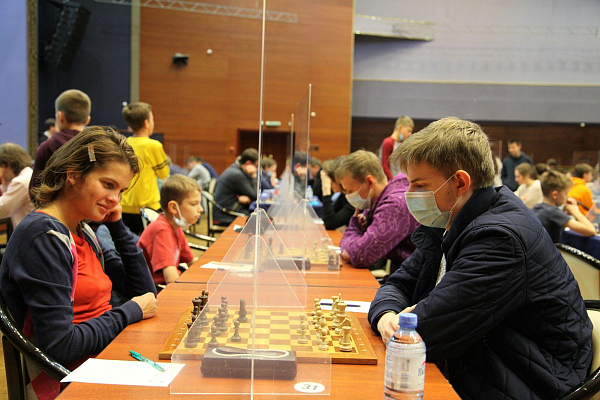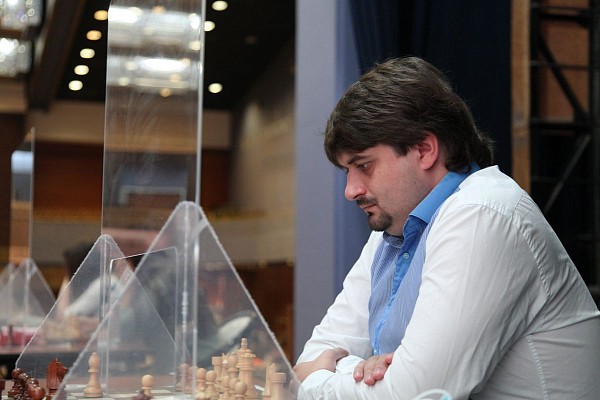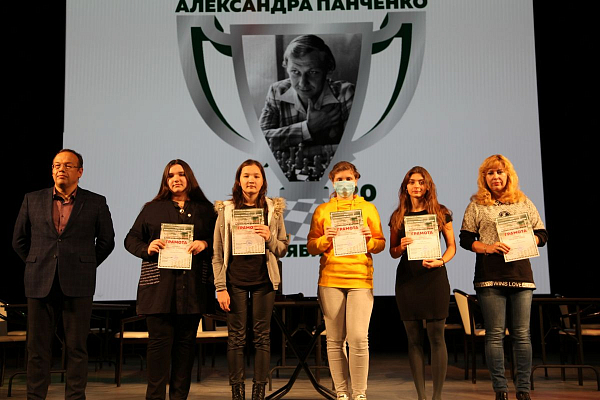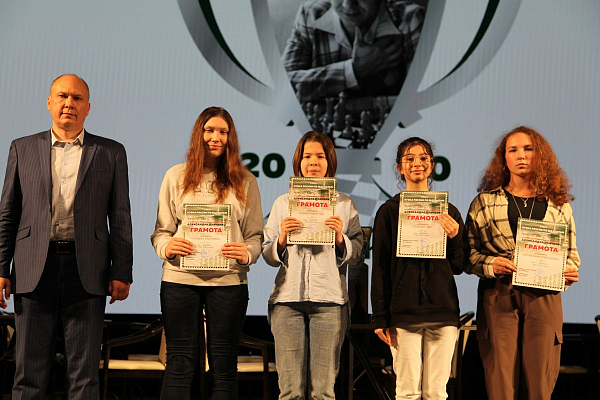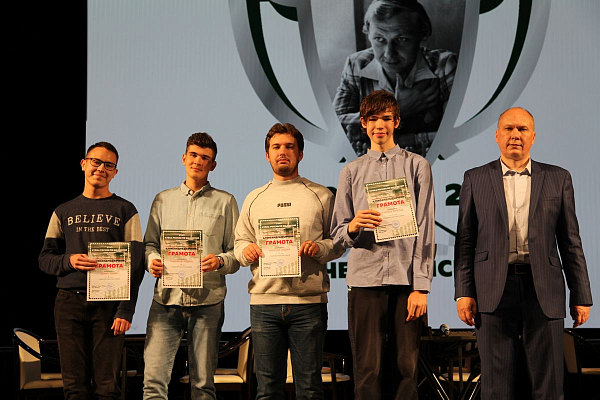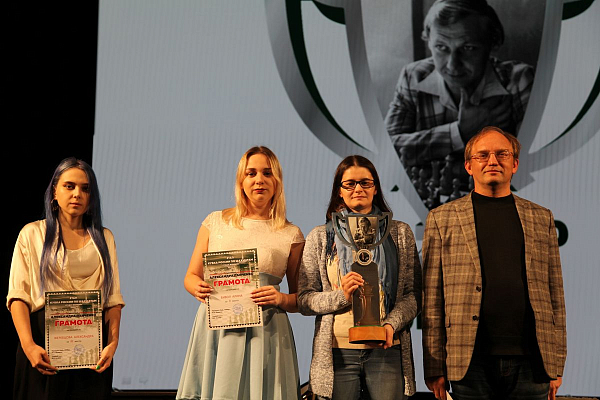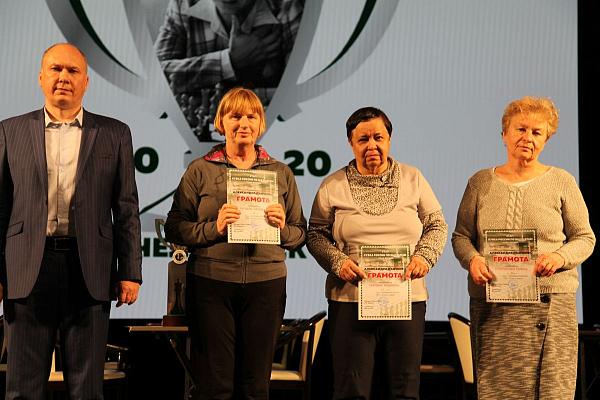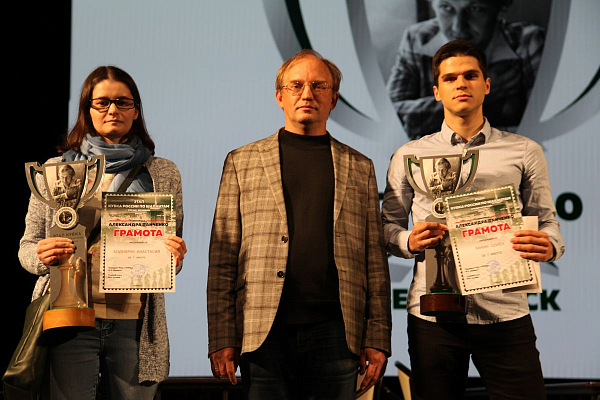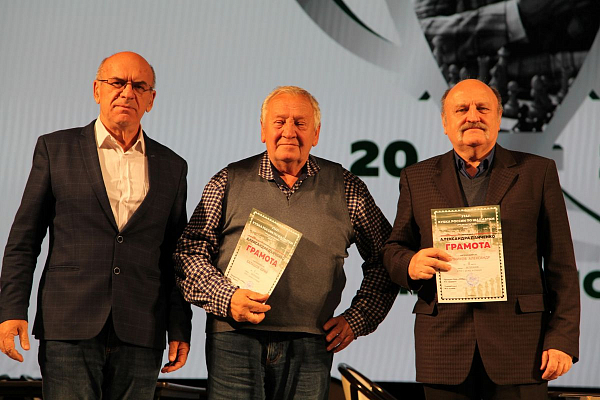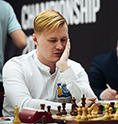Unmasked Face Over the Scene
Dmitry Kryakvin’s report about the Alexander Panchenko Memorial
By the start of the classical section of the Chelyabinsk tournament, the participants got quite used to the new routine. Temperature checks would cause no brows, and wearing a mask and facing your opponent through the glass partition seemed nothing out of the ordinary. Tournament Director Maxim Shusharin warned participants before the start that Chelyabinsk was a different kettle of fish from the European part of Russia basking in record-warm summerish weather. If you happen to have a sore throat or otherwise feel unwell, please take care of your and other people's health. With all risks were on the main organizer alone, what a brave man Maxim Anatolyevich is! None other than Anatoly Karpov admired the fact that the tournament did take place and smoothly at that.
The good news is, no one got sick and almost no one quit the Panchenko Memorial. The Belarusian GM Aleksej Aleksandrov became the only exception. However, everyone's favorite radiated such a positive and wonderful mood that no one ever doubted his state of health!
After the end of the Kurnosov Memorial, part of the grand players had left the Southern Ural, but reinforcements came instead led by Marina Guseva. Fryazino, Marina's hometown, was festooned with red flags and portraits showing the GM with the Communist party insignia. Meanwhile, leftist newspapers were glibly reporting the largest number of candidates that the Communist party was expected to bring into the local Duma in this particular area. So it turned out – Guseva and two of her colleagues supporting the red cause had scored a landslide victory.

Topping the starting list in the men's section were Alexander Predke, Vladimir Fedoseev, Aleksandr Rakhmanov, Anton Demchenko, Pavel Ponkratov, Dmitry Kokarev, the already mentioned Aleksej Aleksandrov, Aleksei Pridorozhni, Igor Lysyj, Maxim Chigaev, Artyom Timofeev, Sergey Volkov and other famous grandmasters. On top in the women's section among others were Anastasia Bodnaruk, Alina Bivol, Marina Guseva, Leya Garifullina, Elena Tomilova, Baira Kovanova, Daria Voit, Ekaterina Goltseva, Ekaterina Borisova, Elena Semenova, Ekaterina Smirnova, and Aleksandra Maltsevskaya. At the same time, many representatives of the fair sex (Polina Shuvalova, Olga Badelko, Ekaterina Nasyrova, Sofia Pogorelskikh, and Elizaveta Martynyuk) decided to compete among men.
At the Kurnosov Memorial's closing ceremony, many a speaker highlighted that the Chigorin, Alekhin, Polugaevsky memorials were about chess heavyweights of the very distant past.
Kurnosov is dear to many of the younger generation, and so is Alexander Panchenko to many of his generation participating in the tournament.
A talented but not having realized his potential in full, GM Alexander Panchenko went down in history mainly as a legendary talent factory coach. Sergey Rublevsky, Dmitry Jakovenko, Mikhail Ulybin, Ruslan Shcherbakov, Maxim Sorokin, Sergey Volkov, Vadim Milov, Alexander Volzhin, Alisa Galliamova, Ekaterina Kovalevskaya, Tatiana Shumiakina, and Svetlana Prudnikova were among his school students. Vladimir Kramnik was one of the first sessions' attendees. I have probably left out many more names, not to mention that dozens of his school attendees became strong Soviet candidate masters and masters.
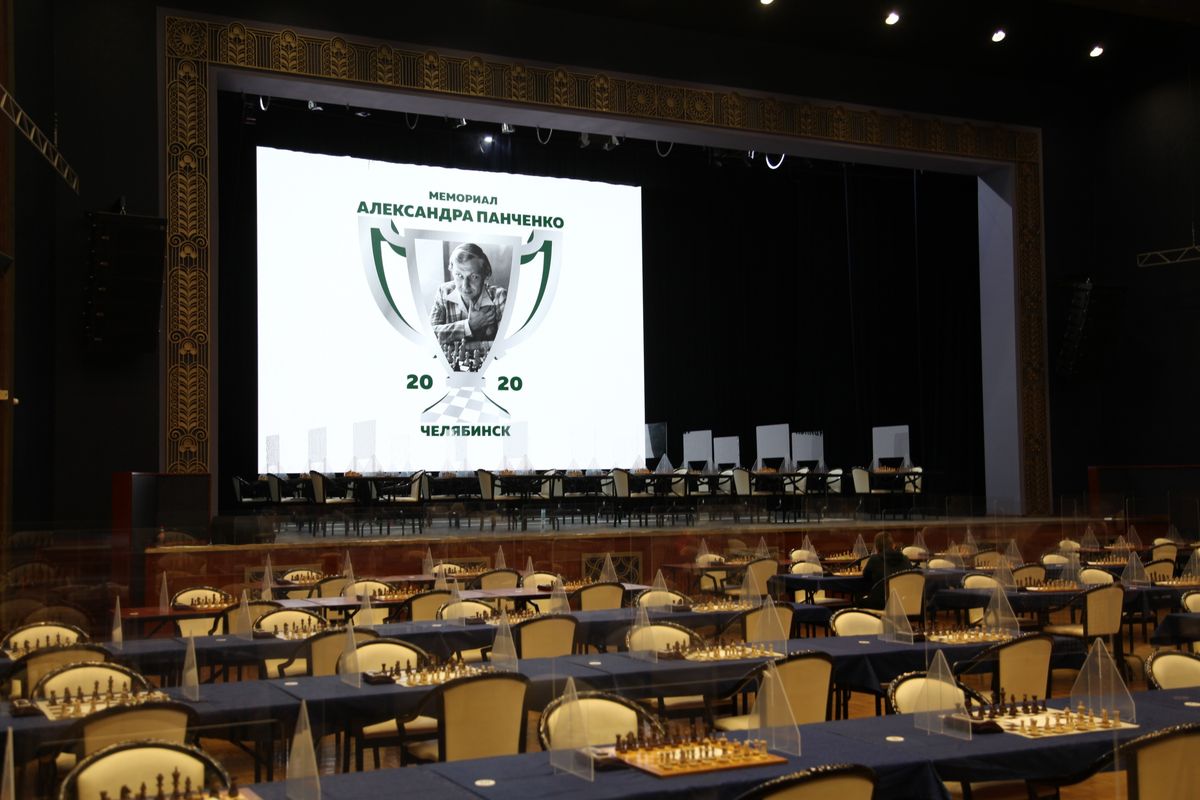
Captained by Panchenko, the Russian youth team (Alexey Dreev, Mikhail Ulybin, Ruslan Shcherbakov, Maxim Sorokin and Igor Khenkin) triumphed at the all-Union games in 1989, ahead of Ukraine with Vasily Ivanchuk and Belarus with Boris Gelfand. Later, in 1992, Alexander Panchenko coached the Russian women's national team in a faraway Manila. Pitted against the stellar teams of Georgia, China, and Ukraine, the latter reinforced by Alisa Galliamova, our girls' fourth place proved an excellent result. On moving to the city of Kazan, Panchenko brought up a galaxy of talented chess players, Artem Timofeev the most distinguished among them.
Students adored Alexander Panchenko. This is evident from multiple articles published on the e3e5.com and ruchess.ru websites, and even today those taking the floor at the closing ceremony ascended the stage with tears in their eyes. It was a great idea to name the tournament after Panchenko. On October 5, the famous grandmaster and coach would have turned 67 years old. The sad news is, he passed away eleven years ago.
The Memorial exercised every safety measure ranging from checking the games for coincidences with computer moves to the point of arbiters keeping a close eye on the border area between the playing hall and the adjacent area. I even happened to witness a toilet inspection on one occasion. As you know, access to the playing hall was denied to the audience due to the COVID-19 regulations. All in all, there happened nothing even remotely suspicious in terms of results.
In the men's section, there was no lack of beautiful games on and off the main stage. A duel between the author of the popular Youtube channel, GM Evgeny Shaposhnikov, and one of the most talented Russian juniors, world youth champion Rudik Makaryan, caused an incredible stir.
Shaposhnikov – Makaryan
Round 6
English Opening
1.Nf3 Nf6 2.c4 g6 3.g3 Bg7 4.Bg2 c5 5.d4 cd 6.N:d4 Nc6 7.0–0 h5!?
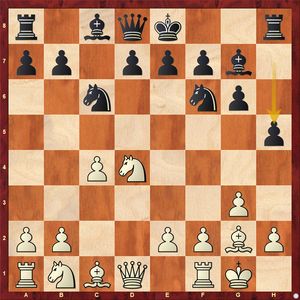
Rudik has more than once employed this line in the quarantine tournaments, and with great success at that. White used to meet it with the routine 8.h4 or 8.h3, but Shaposhnikov took up the gauntlet.
8.c5!? h4 9.Nc3 hg 10.hg Rh5 11.Nb3 d6 12.cd Bh3
Of course, only White benefits from 12...ed 13. Bf4 d5 14.Qd2, as in Markus – Arsovic, 2018. Each side has achieved its goal – White has won a pawn, and Black has broken through along the h-file.
13.B:h3 R:h3 14.Nb5 Qd7
14...Kf8 15.Kg2 Rh5 deserves attention because 16.de+? Q:e7 gives Black strong initiative.
15.Nc7+
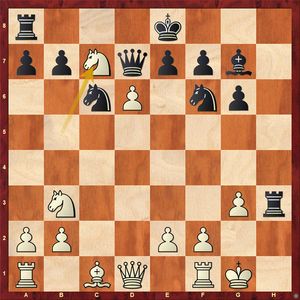
15…Kd8?
This is a blunder! Chess is known for its drawing tendency, the truth which the following served only too well: 15...Kf8! 16.de+ Q:e7 17.N:a8 Qe4 18.f3 Qe5 19.Rf2 (19.Bf4 R:g3+) 19...Q:g3+ 20.Rg2 Qh4 21.Rh2 Qg3+ (or 21...R:h2 22.Qd6+ Kg8 23.Q:h2 Qe1+=) 22.Rg2 Qh4 with a repetition. The black king's precarious condition is obvious to a naked eye, but Rudik's youthful ardour did him a disservice.
16.Nc5?
16.Bf4! is stronger to bring the bishop into the game and reinforce the threat of taking on e7. However, the text ended up luring Black into a faulty combination.
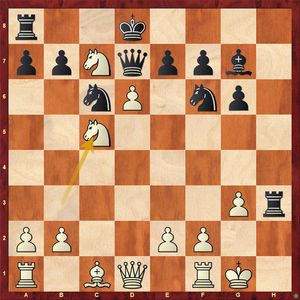
16...Rh1+?
16...Qg4! retained good compensation for the missing pawn and again reintroduced the threat of perpetual check. Black got carried away into believing that he was well on track to checkmate his opponent...
17.K:h1 Qh3+ 18.Kg1 Ng4
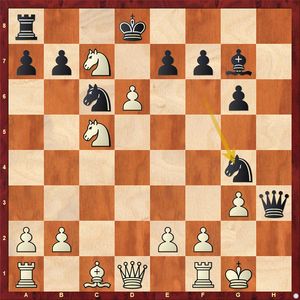
There were many who abandoned their games in anticipation of an effective finale to happen soon. White faces the checkmate threat, but he could do with a straightforward 19.d:e7+ K:e7 20.Qd7+ Kf8 21.N7e6+! Kg8 22.Q:f7+! K:f7 23.Ng5+, winning back the queen. However, Shaposhnikov managed to calculate all the way to the checkmate eleven moves ahead!
19.N7e6+! fe 20.de+ Kc7
It is not hard to calculate that Black loses no matter what, for example, after 20...K:e7 21.Qd7+. We must pay tribute to Makarian for agreeing to a spectacular checkmate in the center of the board instead of giving up immediately.
21.Bf4+ Kb6 22.Qb3+ K:c5 23.Rac1+ Kd4 24.Qc4#
Or 24.Qd3#. A short but exciting game this is!
It was not plain sailing for the favorites at the start. Alexandr Predke fell victim to Artur Gabrielian's King's Indian attack and Vladimir Fedoseev barely escaped from Olga Badelko's powerful pressure. The local public's favorite and now the capital city's filibuster, Pavel Ponkratov suffered two defeats.
Afanasiev – Ponkratov
Round 4
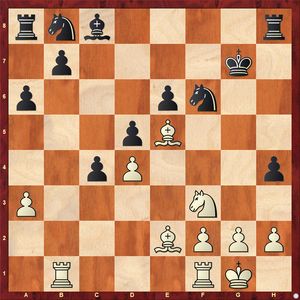
How many times has Ponkratov got away from a situation like this? However, Black has only one knight in the game, and Afanasiev takes advantage of this circumstance in a very skilful manner.
20.g4! hg
Black drops the piece to 20...Nbd7 21.g5 N:e5 22.gf+ .
21.fg Nbd7 22.Ng5! N:e5 23.de Nh7 24.Nf7! Rf8 25.Bh5
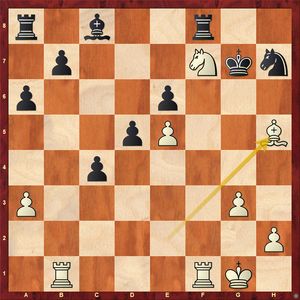
What a nice box that White has engineered for Black! This is how The Port Royal Navy once surrounded Jack Rackham's ship. Now the white rook's transfer to g4 is inevitable.
25…b5 (25...Bd7 26.Rf4+-) 26.Rf4 R:f7 27.R:f7+ Kh6 28.h4 Ng5 29.hg+ K:h5 30.g6 Kh6 31.g7 Kh7 32.Kf2 Bb7 33.Rh1+ Kg6 34.R:b7 1–0
However, we know Ponkratov's real value. Having lost sense of time in the final round of the rapid section and having completely failed the first part of the classical section, Ponkratov then rose like a Phoenix from the ashes and won four games in a row at the home stretch! That's why we love this real chess artist, without whom the opens would have been such a bore!
Alas, it did not go at all well for the Russian South leader Anton Demchenko. Anton went down in the second round to Sitnikov, then caught up with the group of leaders, but then let Afanasiev escape and suffered yet another blow at the end.
Demchenko – Demidov
Round 7
Ruy Lopez
1.e4 e5 2.Nf3 Nc6 3.Bb5 Nf6 4.d3 d6 5.0–0 Bd7 6.Re1 a6 7.B:c6 B:c6 8.d4 Be7 9.Nc3 0–0? 10.de de 11.Q:d8 Rf:d8 12.N:e5
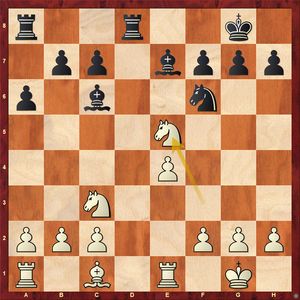
Black drops a pawn because 12...B:e4? 13.N:e4 N:e4 14.Nd3 f5 15.f3 drops a piece and is completely underwhelming for Black. This idea made its debut in the 1892 game Tarrasch – Marco. However, as one of the Moscow delegation members wittily remarked, there had been no Karpov school in the capital city in 1892. Mikhail, of course, had not problem calculating this line over the board and retreated his bishop instead
12…Be8
And what then? He even ended up winning the game! He probably just needed to get rid of this pawn to do this!
All in all, a cool Chelyabinsk environment gave the southerners a hard time, which is obvious not only from Demchenko's results, but also from those displayed by Savchenko, Gabrielian, and Kryakvin. The only southern person to dodge this bullet was Elena Tomilova, who took fourth place in the women's tournament.
A seasoned Swiss tournament player, Alexander Rakhmanov started on a very positive note, but later shared about his upcoming voyage to Sakhalin and his decision to save up on energy at the home stretch and getting along with the +4 result for that reason. Main battle flared up between the silver medalist of the Russian Cup Dmitry Kokarev (a Penza chess player almost always finishes second in the final) and the rising star of Novosibirsk chess Semen Khanin. Semen somehow won't make his old coaches Artur Gabrielian, Dmitry Kryakvin and Dmitry Bocharov happy by making the third GM norm, although Khanin's chess power is well-known as he has won major tournaments and scored victories over elite grandmasters. Not only was there no stopping Khanin in Chelyabinsk, he could have scored even more points than his 7 out of 9.
Aleksandrov – Khanin
Round 8
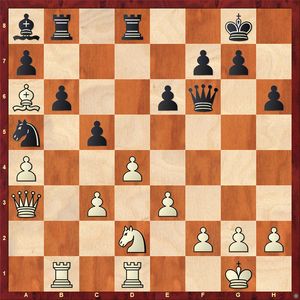
20...e5! 21.d:c5
There is no satisfactory defense for White: 21.Nb3 Be4! 22.Bd3 (22.Rb2 Qg6 23.Bf1 Nc4; 22.N:a5 Qg6 23.Bf1 B:b1) 22...B:d3 23.R:d3 c4; 21.de Qg6 – White loses material in all lines.
21...R:d2! 22.R:d2 Qg6 23.Bf1 Q:b1 24.Rd7 B:g2! White resigned because taking the bishop results in dropping yet another rook.
The first player abandoned the competition, but the second player did not and took 150 thousand roubles as prize money.
Kokarev, on the other hand, demonstrated his powerful white serve day after day. It is no secret that many Russian junior talents, especially those from the Sverdlovsk Oblast, follow Kokarev's opening repertoire as White. It gives you quite a wealth of ideas to put into your arsenal.
Kokarev – Fedoseev
Round 7
Ruy Lopez
1.e4 e5 2.Nf3 Nc6 3.Bb5 Nf6 4.0–0 N:e4 5.d4 Nd6 6.B:c6 dc 7.de Nf5 8.Q:d8+ K:d8 9.h3 Bd7 10.Nc3 h6 11.b3 Kc8
Nowadays, the king would often sidestep to e8, and the setup with the king on c8 was tested by Aleksej Aleksandrov long before the Berlin gained its popularity.
12.Bb2 b6 13.Rad1 Ke7 14.Nd4 c5 15.Nde2
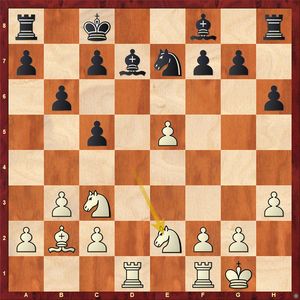
15…Nc6
In a correspondence game, Black held his position together with 15...Bf5 16.Rd2 h5 17.Ng3 Be6 18.Nge4 g6 19.Ng5 Bh6 20.Nce4 Kb7; however, there is nothing doing without vast knowledge and insight into arising positions.
16.Nd5 c4?
16...Kb4, as in Pavlovich – Abramovich, 2002, or 16...a5, as in Sutovsky – K. Georgiev, 2008, look trickier, while Fedoseev opted for buying off with a pawn sac right away. However, White's pieces are very well placed, and the game quickly transposed to the conversion stage.
17.bc Bc5 18.Nc1 Re8 19.Nd3 Bd4 20.B:d4 N:d4 21.Rd2 Nc6 22.f4
As a result, Kokarev converted his edge in a technical manner.
Taking third was Maxim Chigaev of Tyumen. Recently there appeared in the Internet an interesting table with Alphazero's evaluation of different pieces' potential in a variety of situations. So, Chigaev and Demidov had a chance to prove this table's worth by pitting queen against two rooks.
Chigaev – Demidov
Round 9
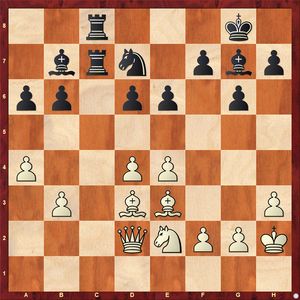
Indeed, a rook pair is a powerful tandem, but they have no entry points in this position. Meanwhile, White can slowly encroach on the black king. Nevertheless, exhausted by the Title Tuesday, Maxim Chigaev is not yet back to his belligerent mood.
28.Bh6 Bh8 29.Be3 Bg7 30.Bh6 Bh8 31.Be3 Bg7 32.Bh6 B:h6?
Black could have gone for a three-fold repetition, but chose to continue the fight instead, much to his woe.
33.Q:h6 e5 34.f3 ed 35.N:d4 Rc5
Black should have perhaps opted for 35...Re8 because 35...Кe5 36.Сe2 d5 37.f4 is clearly dangerous for Black for his king's exposed situation.
36.Bc4! d5
36...Ne5 37. Ne6! fe 38. B:e6+ Kh8 39.B:c8 R:c8 40.Qg5 Nd7 41.Qe7 Bc6 42.Q:d6 only emphasizes White's plan when a single Queen assisted by pawns gradually prevails over a massive but uncoordinated army of Black's. Demidov tried to buy his way out with material sacrifices, but there was no escape.
37.ed B:d5 38.B:a6 Ra8 39.b4 Rc7 40.Qf4 Rca7 41.Bb5, and White won.
It was not for nothing that Alphazero evaluated Queen as superior to nine pawns if placed in the right hands! I'm happy for Maxim and feel sorry for Mikhail, although the latter went on to win the rapid event, which is quite an achievement!
Final standings in the open tournament. 1. S. Khanin, 2. D. Kokarev, 3. M. Chigaev with 7 out of 9 apiece; 4. A. Rakhmanov, 5. A. Pridorozhni, 6. I. Lysyj, 7. P. Ponkratov, 8. A Predke, 9. A. Timofeev – 6.5; 10–22. V. Fedoseev, A. Goganov, R. Makhmutov, D. Bocharov, N. Afanasiev, S. Savitsky, E. Shaposhnikov, M. Demidov, K. Stupak, A. Demchenko, A. Nesterov, I. Iljiushenok, and E. Gleizerov – 6 points each.
Anastasia Bodnaruk continued her winning streak. Nastya had performed well in the Moscow Open shortly before the start of the quarantine, but here, in the absence of foreign participants, she was simply unstoppable and finished with 8 out of 9!
Bodnaruk – Maltsevskaya
Round 9
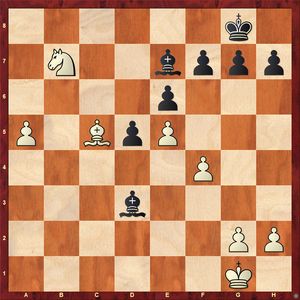
33...Kf8?
Now White gets a remote passer and a great knight versus black's poor bishop. Black's only chance to bail out was in transposing into the opposite-colored bishop ending: 33...Ba6! 34.B:e7 (34.Nd6 Kf8 35.Kf2 B:d6) 34...B:b7 35.Kf2 (35.Bc5 f6) 35...d4 and Black is ready to give up the d-pawn to pave his king's way to the queenside.
The rest was easy.
34.Kf2 Ke8 35.B:e7 K:e7 36.Ke3 Ba6 37.Nc5 Bb5 38.Kd4 f6 39.a6 g5 40.g3 h6 41.a7 Bc6 42.Na4 gf 43.gf fe+ 44.fe Kd7 45.Nb6+ Kc7 46.Kc5 d4 47.a8Ф B:a8 48.N:a8+ Kb7 49.K:d4 1-0.
Alina Bivol enjoyed a great tournament. In the opening part, Borisova's seasoned coach Pavel Ponkratov managed to outperform the powerful coaching staff of Alina's (in the same 4.Bd2 anti-Grunfeld line Ponkratov defeated Aleksey Goganov), but the tides turned when the game reached the point of fighting "on the flags".
Borisova – Bivol
Round 8
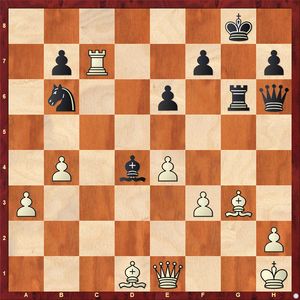
Armed with the bishops, an extra pawn and an active rook White only needed to take care of her king's safety. It was not a big deal after 35.f4 Qh3 36.Bf3.
35.a4? Qh3 36.a5?
After 36.f4 h5 37.Bf3 h4 38.Bg2 Qg4 39.Qd2 hg 40.Q:d4 the position is no longer as clear as it used to be, but this is what White should have opted for anyway.
36...Be5!
It turns out that the white king is doomed now.
37.ab B:g3 38.Rc8+ Kg7 39.Qe2 B:h2 40.Qb2+ Be5+ White resigned. To Borisova's credit, she managed to overcome this failure and win the last-round game to clinch into the prize pool.
Finally, Alexandra Zherebtsova proved the tournament's revelation by covering the distance confidently and scoring many points against grandmasters, not to mention her having stood her ground against Bodnaruk! In the last round, Zherebtsova could count on more, but her opponent Daria Khokhlova showed her worth and managed to survive from a much worse position.
Final standings in the women's section 1st. A. Bodnaruk with 8 out of 9; 2. A. Bivol, 3. A. Zherebtsova, 4. E. Tomilova, 5. D. Khokhlova – 6.5 apiece; 6-10. D. Voit, A. Maltsevskaya, M. Guseva, E. Borisova, E. Semenova – 6 each.
The tournament is over, but Maxim Shusharin is not going to stop there. Soon the Urals Federal District championship starts in Chelyabinsk, and October will see the final stage of the women's Russian Cup "Satkinskaya Osen" taking place there.
In his closing speech Evgeny Gleizerov highlighted that the road had been paved, and many who were afraid to hold live tournaments would follow in the footsteps of Maxim Shusharin. This is something that I am really looking forward to!
Pictures by Natalia Lastochkina and Dmitry Kryakvin












